
To celebrate the release of Disney-Pixar's Onward and Soul in 2020, we're taking you on a nostalgia-fuelled journey through the studio's classic films. This week: A Bug's Life.
What's the story of A Bug's Life?
Loveable ant Flik (Dave Foley) is an oddball in the midst of his colony. However, he's embraced as an unlikely hero when defending his friends and family from a swarm of greedy grasshoppers, led by the evil Hopper (Kevin Spacey). In order to defend his territory, Flik must venture beyond all he knows and recruit a group of misfit circus bugs to help safeguard his home.
How did A Bug's Life get made?
Released in 1995, Toy Story not only established itself as a classic family movie, but a watershed moment in cinema history. The fledgling movie from Pixar Animation Studios (later incorporated into Disney-Pixar in 2006), Toy Story was the first feature-length CGI animation, building on the potential inherent in Pixar's delightful short films such as Luxo Jr.
Of course, the slickness of the animation was mind-boggling enough, but the real reason Toy Story resonated was down to the brilliance of its storytelling. This would become another hallmark of Pixar's style, at its best, putting character, warmth and wit above all else. Toy Story centrally hinges on the fractious buddy duo of cowboy Woody (Tom Hanks) and deluded space ranger Buzz Lightyear (Tim Allen), the standard by which all other Pixar buddy duos are judged.
It's hardly surprising that Toy Story threw down a formidable gauntlet to its successor. And it's therefore not surprising that said movie, A Bug's Life, has perhaps scuttled out of the collective memory faster than most of the studio's other movies. But that's not to deny the charm and luscious visuals of this impressively imaginative family animation, one inspired by Aesop's fable The Ant and the Grasshopper.
The fable had already been adapted for the big screen: 1921's The Ant and the Grasshopper from Aesop's Fables Studios became one of the pioneering animations of its era. And this same story was later adapted by Disney for 1934's The Grasshopper and the Ants, in which a feckless, singing grasshopper is taught the value of hard work by a collective of ants, who feed him when he's at his most vulnerable.
Pixar Animation's former creative chief John Lasseter, who had directed Toy Story, was enthusiastic about an insect-based fable as his next project. During an early test screening for Toy Story, Lasseter pitched the idea of A Bug's Life to Disney CEO Michael Eisner, who responded enthusiastically. Disney approved the treatment and gave notice on the 7th of July that it was exercising the option of a second film under the original 1991 agreement between Disney and Pixar. Lasseter agreed to co-direct the project, originally known as 'Bugs', with Andrew Stanton (later of Finding Nemo and Finding Dory fame).
During the development of the screenplay, it was decided that the grasshopper character from the earlier Disney animation would instead steal the food from the ants, setting up a traditional antagonist-protagonist storyline. The endearing circus bugs were originally written as thieves and charlatans set to betray the ants, before later fighting alongside them against the colony of grasshoppers. Stanton believed this didn't make sense and re-wrote their motivations, also changing lead circus insect Red into the hero ant character eventually known as Flik.
Animating the insect characters proved a challenge for Pixar, then in the embryonic stages of its development as a studio. In a bid to make the creatures more appealing to a family audience, they were anthropomorphized, given expressively large eyes and smiles, devoid of mandibles and walking in a bipedal nature on two legs. By contrast, the villainous grasshoppers were fixed with more appendages to make them look increasingly off-putting. In order to depict the world as seen through an ant's eyes, the animation team developed a 'bugcam', essentially a miniature camera on LEGO wheels, that was pushed through grass and foliage to give the animators a sense of how to render the film's world.
Another challenge arose in the shots of the ant colony, teeming with multitudes of characters. It was necessary for every character within the relevant shots to move in their own unique way, so supervising animator Bill Reeves developed a special kind of autonomous movement software. This allowed four or five groups of about eight individual "universal ants" to be scattered throughout each scene, giving the illusion that every creature is acting of its accord, and not repeating the same behaviour as its CGI counterpart. It was the kind of subtle technological breakthrough that would help put Pixar Animation Studios on the map.
Given the nature of the film's outdoor environment, it was also imperative for textures and surfaces to be rendered in a lifelike way. Pixar co-founder Edwin Catmull developed a technique known as 'subsurface scattering', which alters the effect of light on a digitally rendered 3D object. Given that the effectiveness of the technique was untested, Catmull requested that he make a short film to trial it: the end result was the delightful 'Geri's Game', a pioneering Pixar short for how it renders realistic skin tones and textures. The movie was itself attached to the front of A Bug's Life, setting in motion a Pixar tradition that continues to this day.
With the voice cast led by a troupe of American sitcom stars, including The Kids in the Hall's Dave Foley as Flik and Seinfeld's Julia Louis-Dreyus as Princess Atta, the movie got a significant boost from the presence of Kevin Spacey as Hopper. It's alleged that Spacey got the role after Lasseter's original choice Robert De Niro repeatedly turned the role down; when Lasseter met Spacey at the 1995 Academy Awards, the actor signed on, eventually giving an enjoyably snarling performance. Although Spacey's reputation is somewhat disgraced today, at the time of A Bug's Life's release in 1998, he was one of the most coveted actors of the period, fresh from an Oscar win for The Usual Suspects, and poised to win another for American Beauty.
Who composed the soundtrack for A Bug's Life?
A Bug's Life's Grammy-winning score was composed by the erstwhile Randy Newman. The veteran satirist (responsible for hits like 'Short People' and 'I Love L.A.') had scored Toy Story, unleashing the classic 'You've Got a Friend in Me' upon the world. Both the song and Newman's effervescent, breezy underscore were nominated for Oscars, and infused the movie with warmth; however, Newman lost out, respectively, to 'Colours of the Wind' from Disney's Pocahontas, and Luis Bacalov for The Postman.
It was therefore, unsurprising, that Pixar would retain Newman's services for A Bug's Life, cementing a working relationship that's lasted to this day. Of all Newman's works for the studio, A Bug's Life is perhaps the least well-known, if only because it doesn't have a strong song to boost its profile. Said track 'The Time of Your Life' is entertaining but can't measure up to Newman's wittier works elsewhere in the Pixar canon, although his accompanying underscore does hit the requisite notes of comedy, adventure and menace where necessary.
What are some classic quotes from A Bug's Life?
Hopper: "Do I look stupid to you? Let's just think logically shall we? Let's just think about it for a second. If it was up there would I be coming down to your level looking for it? Why am I even talking to you? You're not the queen, you don't even smell like the queen."
Flik: "You're wrong, Hopper. Ants are not meant to serve grasshoppers. I've seen these ants do great things, and year after year they somehow manage to pick food for themselves *and* you. So-so who is the weaker species? Ants don't serve grasshoppers! It's *you* who need *us*! We're a lot stronger than you say we are... And you know it, don't you?"
P.T. Flea: "Are you kidding? These guys are the lousiest circus bugs you've ever seen, and they're gonna make me rich!"
What was the legacy of A Bug's Life?
It's arguable that A Bug's Life is the 'forgotten' Disney-Pixar movie, although that's perhaps less a reflection of the film itself, and more to do with the sheer amount of classic movies they've put out. The movie was a box office success, grossing $363 million against its $120 million budget, and received warm reviews.
However, inevitable comparisons were made between A Bug's Life and rival movie Antz, produced by studio DreamWorks with which it shared a very similar theme. The competition resulted in a brief if rather ugly spat between Lasseter and Steve Jobs in the Pixar camp, and Jeffrey Katzenberg, co-founder of DreamWorks. It was the first sign of a rivalry that would exist between the studios for many years, with both sides producing their fair share of all-time classics. (Although generally considered inferior to Disney-Pixar, DreamWorks did put out the likes of Shrek.)
Todd McCarthy of Variety was very much on the side of A Bug's Life: "Lasseter and Pixar broke new technical and aesthetic ground in the animation field with Toy Story, and here they surpass it in both scope and complexity of movement while telling a story that overlaps Antz in numerous ways."
What was the next Disney-Pixar movie to be released?
Toy Story 2, released in 2000, reunited us with Woody and Buzz.
Click here to book your tickets for Onward, released in Cineworld cinemas on the 6th of March. Soul, meanwhile, is released on the 19th of June. And don't forget to tweet us your favourite Disney-Pixar movies @Cineworld.
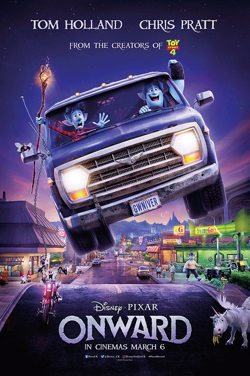

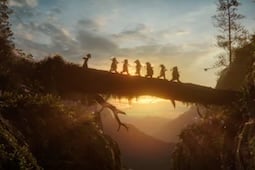



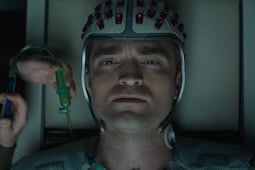
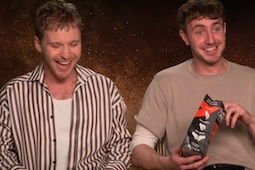
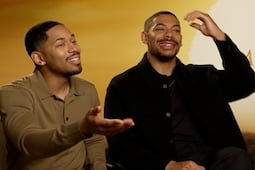





.jpg)
.png)





